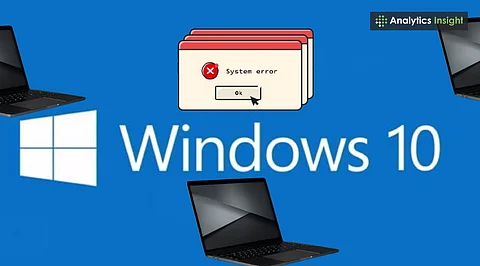

Windows 10 saw record-breaking adoption across over 1 billion devices.
Promises of cross-platform unity via UWP and mobile integration collapsed.
Privacy, bloatware, and forced updates triggered user backlash.
Introduced in July 2015, Windows 10 rapidly achieved adoption records, reaching over 350 million devices in its first year alone. It went on to run over a billion devices globally, saturating PCs, laptops, and even specific embedded systems. The company’s upgrade initiative, giving the OS away for free to Windows 7 and 8 users, was a key contributor to that initial spurt.
Its appearance also found a middle ground between the divisive Windows 8 and the popular Windows 7. The Start Menu was back, touch support was enhanced, and it added features such as Cortana, virtual desktops, and the Edge browser. Windows 10, for many, was a course correction, a contemporary yet familiar OS that ‘just worked.’
Microsoft introduced Windows 10 as a service, not a product, during its launch. Under ‘Windows as a Service,’ the firm guaranteed perpetual updates rather than shipping completely new versions. The objective? One unified Windows platform, OneCore, is available across PCs, tablets, phones, Xbox, and IoT devices.
The Universal Windows Platform (UWP) was a linchpin of this strategy. Developers could build a single app that ran across devices. Meanwhile, the OS would evolve incrementally via regular feature updates. Microsoft even declared Windows 10 the ‘last version of Windows,’ intending to build atop it indefinitely.
Also Read: Opera vs Microsoft: Battle Over Browser Fairness Reignites in Brazil
Even with the technical strength, ambitious cross-platform aspirations mostly disintegrated. UWP never gained traction, and developers remained iOS and Android-centric. The Microsoft Store grew bloated, confusing, and all but abandoned. Windows Phone, a former centerpiece, was dropped entirely by 2019.
Flagship features such as Cortana, Continuum, and My People were retired or quietly put on the back burner. Even Edge, the stock browser, never caught on until the tech giant tore it down and rebuilt it from the ground up on Chromium in 2020.
More significantly, users never really accepted Windows 10 as a cross-device platform. It was always what it was: a PC operating system, and that’s where its applicability remained stuck.
One of the largest mistakes was the aggressive and forced upgrade campaign. Microsoft’s Get Windows 10 (GWX) program walked the line between malware strategy, downloading the installer in the background, pestering users, and even starting upgrades without asking permission. Lawsuits ensued, and many long-time Windows die-hards felt betrayed.
Aside from that, privacy issues plagued Windows 10 from the beginning. Telemetry was turned on by default, with a way to avoid it altogether easily, only if you were on an Enterprise edition. The tech leader was accused of data harvesting to an extreme degree, questioning user control.
Renowned for running obnoxious ads and bloatware, the OS sometimes served an inordinate number of notifications that made updating OneDrive or Edge difficult. For intents and purposes, power users and IT admins found this an active battle between control and corporate nudging.
To its credit, Windows 10 provided a solid-performing foundation. Gaming performance increased, boot times decreased, and newer security features such as Windows Hello and Defender evolved. The experience for the average user was much more stable and usable than its predecessor.
There were bumps even in calm weather. The transition of Microsoft updates to twice-a-year feature updates created bugs, regressions, and unforgiving rollout timing considerations. The October 2018 update, for instance, deleted users’ files, which shook people's belief in the whole update model.
Also Read: CoPilot Mode in Microsoft Edge Brings Smart AI Assistant Tools
With support officially concluding on October 14, 2025, Windows 10’s 10-year dominance is closing. In sheer numbers, it’s an undisputed success. As a platform strategy, it’s a cautionary tale. Microsoft discovered that dominance on desktops doesn’t necessarily translate into influence on mobile or next-gen computing.
Windows 10 was, in a large sense, Microsoft’s savior and saboteur. It saved the company from the Windows 8 debacle, but its overreach revealed profound cracks in vision and execution.
As consumers slowly transition to Windows 11, with more complex requirements on hardware, UI redesigns, and ongoing ad-laden prompts, Windows 10 casts a long shadow. It wasn’t an OS but a gamble on the future that didn’t pan out.
1. Why is Windows 10 called a successful failure?
It dominated global usage but failed to deliver on its unified platform vision, with UWP, mobile ambitions, and many promised features falling flat.
2. What made Windows 10 so widely adopted?
Free upgrades, a return to familiar UI, and Microsoft’s aggressive upgrade strategy pushed Windows 10 to over 1 billion devices worldwide.
3. What were the major criticisms of Windows 10?
Users criticized forced upgrades, invasive telemetry, buggy updates, preinstalled bloatware, and Microsoft’s relentless promotion of its own apps.
4. Did Windows 10 deliver performance and security?
Yes. It improved boot speeds, added features like Windows Hello, and matured Windows Defender into a reliable security suite.
5. When does Windows 10 support officially end?
Microsoft will end official support for Windows 10 on October 14, 2025, urging users to upgrade to Windows 11.
